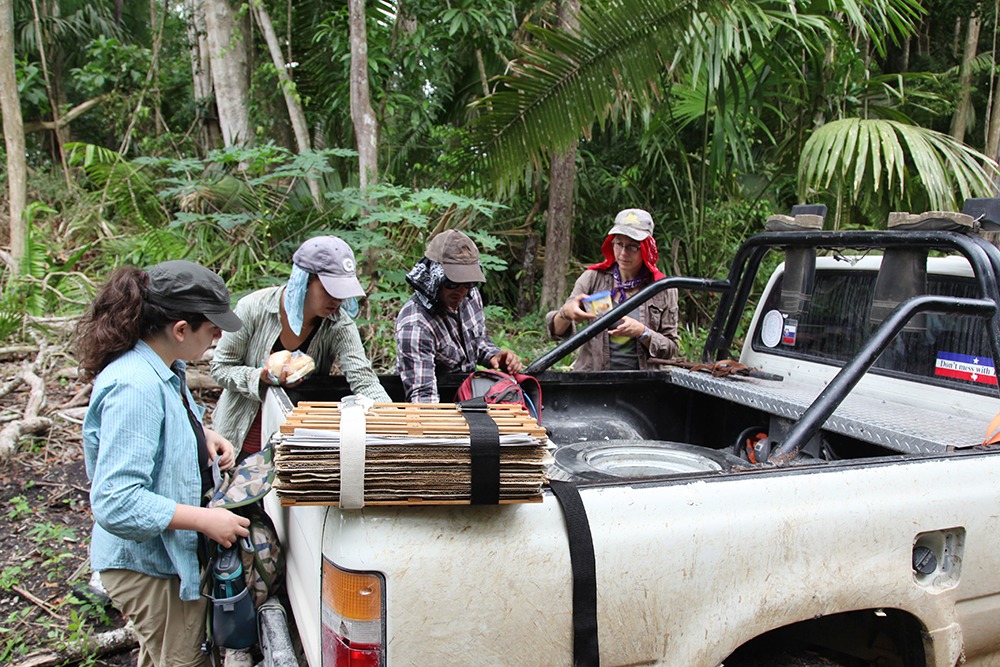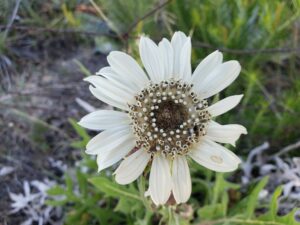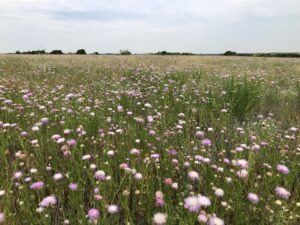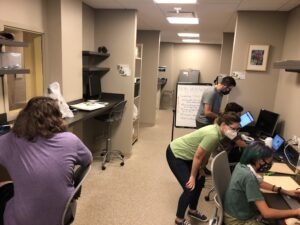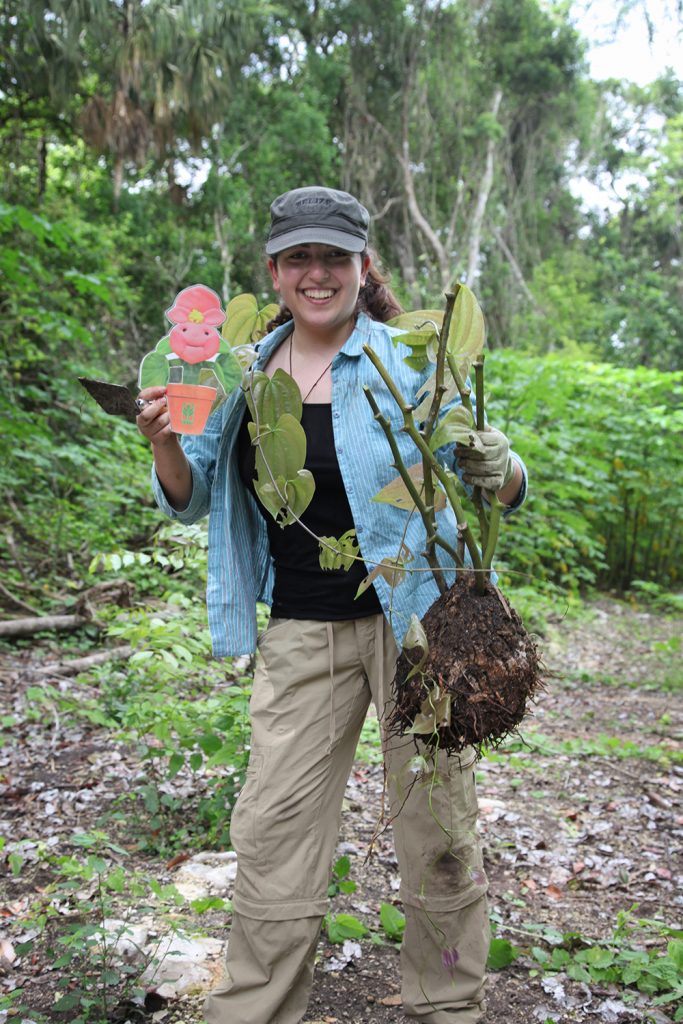
Over the past two summers (2015 & 2016), BRIT Resident Research Associate Dr. Grace Bascopé, a Medical and Environmental Anthropologist, worked with the Maya Research Program’s (MRP) Blue Creek Archaeological Project to investigate the flora in far northwestern Belize. Working with her were Dr. Will McClatchey, former BRIT staff member and ethnobotanist, and Dr. Thomas Guderjan, Associate Professor of Anthropology (University of Texas, Tyler) and director of the MRP Blue Creek project.
For over two decades, MRP has undertaken annual archaeological field seasons in northwestern Belize to better understand the ancient Maya civilization that lived there from 900 BC to AD 900 and later. This effort has included major excavations of several ancient Maya centers and multi-disciplinary and multi-national studies of their agriculture systems. Besides Dr. Guderjan, others working on this project are Dr. Tim Beach, soil scientist and geographer (Georgetown University), Dr. Sheryl Luzzadder-Beach, hydrologist and geographer (George Mason University), and Dr. Nick Brokaw, forest ecologist (Universidad de Puerto Rico), among many others.

MRP staff have witnessed the ongoing loss of forests and archaeological sites to clearing for modern agriculture and are taking steps to protect remaining sites. They recently purchased the “Grey Fox” site, one of only four Maya plaza-pyramid centers remaining in northwestern Belize. MRP is actively studying two of the other three sites—now only “forest islands” of 150 and 154 acres—and hopes to purchase for protection. While MRP’s primary interest is in protecting the archaeological materials within these sites, its members are also deeply concerned with protecting these forest remnants and treating them wisely as excavations go on.
Brokaw has completed an inventory of the trees of the high canopy at Grey Fox, to which Bascopé and McClatchey are adding the other plants of the region. They collect in duplicate for the BRIT herbarium and the National Herbarium of Belize (BRH) in Belmopan, and they also trained senior staff members of the MRP Project in collecting plant specimens and properly drying and storing them. This will allow the plant collections to grow even after those staff associated with BRIT leave the field. As a way of both saying thanks for allowing the research to be conducted in Belize and helping the resource-scarce National Herbarium, all specimens to be deposited there by the BRIT/MRP team are carefully mounted on archival paper and properly labeled.
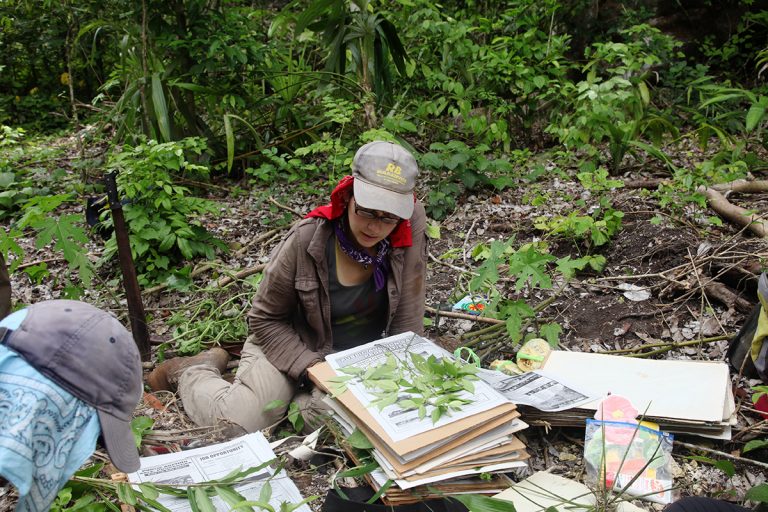
The overall goals of this joint BRIT/MRP project—benefiting BRIT, MRP, and the Belize National Herbarium—are (1) to contribute to BRIT’s collections from this Central American region; (2) to contribute to the national collections of Belize; (3) to provide a plant inventory so that archaeological work can continue with as little impact on the forest as possible; and (4) to provide an understanding of plants that are in the immediate area of the sites so these can be compared with pollen, phytolithic, and other plant material recovered during excavation. This also provides the archaeologists with a floristic baseline, which helps them address issues such as subsistence patterning and climate change.
The BRIT/MRP project has led to the discovery that a very large percentage of the plants found at Grey Fox are edible, and this possibly lends credibility to the argument that the Maya have long-engineered their own forest environments. Even site cores (the ceremonial centers full of large pyramids and other structures), not to mention the residential precincts of these ancient cities, may not simply have been sterile places covered over with white plaster, but more likely resembled temperature-lowering gardens full of edible and useful plants.
